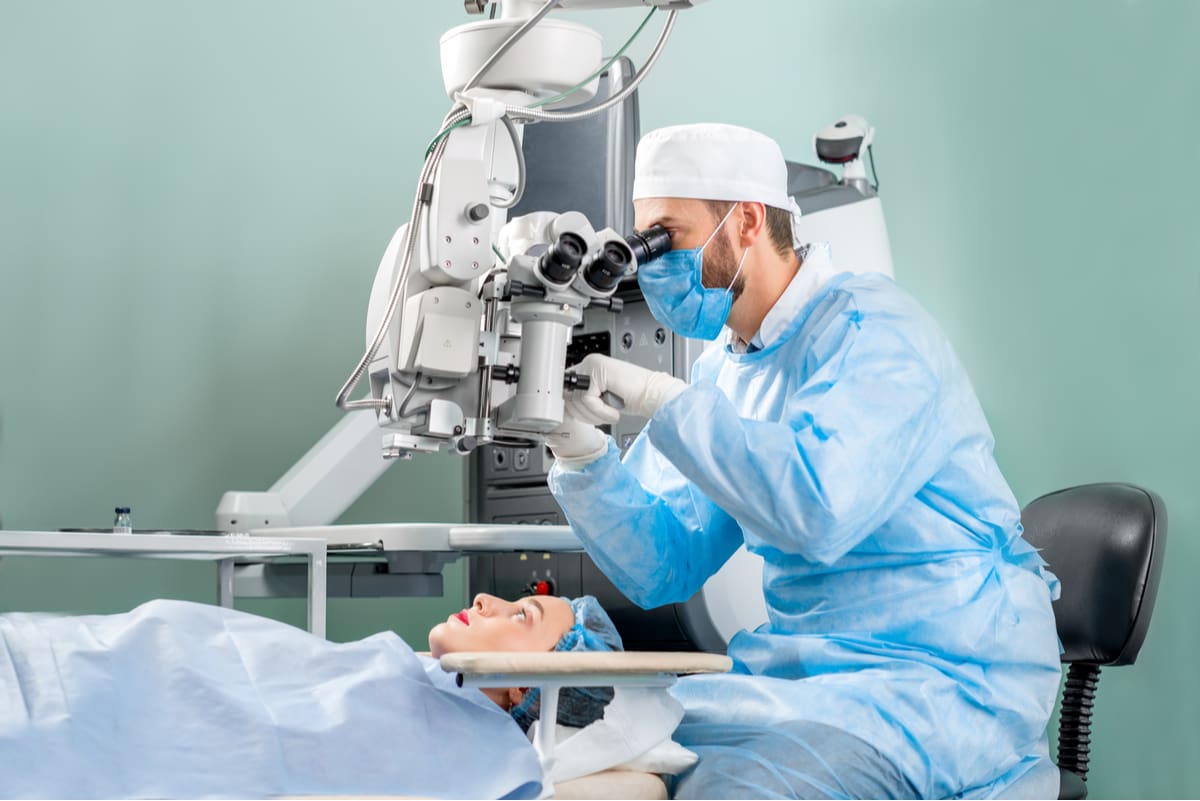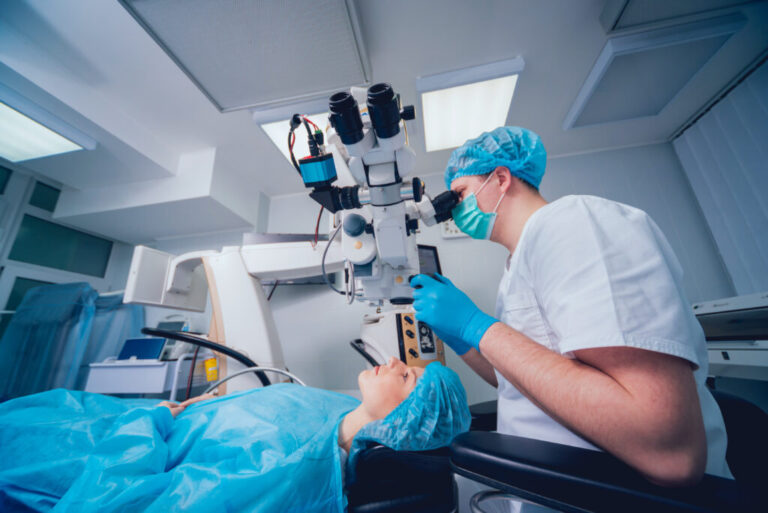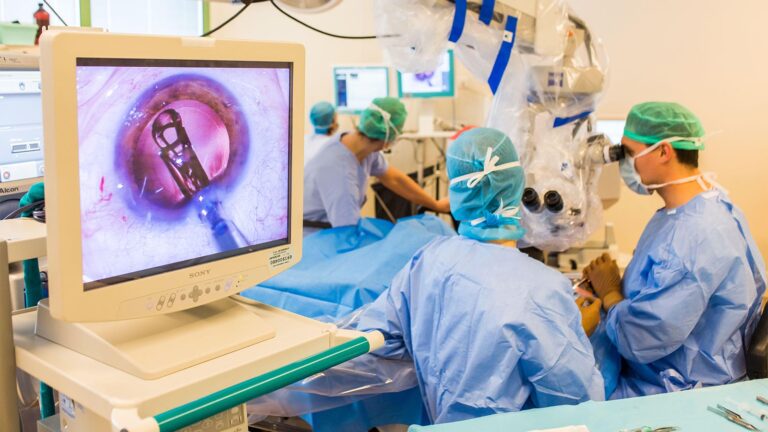Cataract eye surgery has revolutionized the way we treat one of the most common vision impairments worldwide. As a minimally invasive procedure, it has brought hope to millions who grapple with blurred vision and the challenges it presents in daily life. This article explores the intricate details of cataracts, the evolution of surgical techniques, and the profound impact of cataract surgery on quality of life.
Understanding Cataracts: A Brief Overview
What are Cataracts?
Cataract eye surgery are a clouding of the eye’s natural lens, which is situated behind the iris and pupil. This condition can lead to a significant decline in vision as the lens becomes less transparent. Most cataracts develop gradually and can affect one or both eyes.
While cataracts can occur at any age, they are particularly common in older adults. It is estimated that by age 75, more than half of individuals will have developed cataracts to some degree. In their early stages, cataracts may not cause any noticeable symptoms, but as they progress, they can lead to serious visual impairment. The gradual nature of cataract development often means that individuals may not realize the extent of their vision loss until it significantly impacts their daily activities, such as reading, driving, or enjoying hobbies.
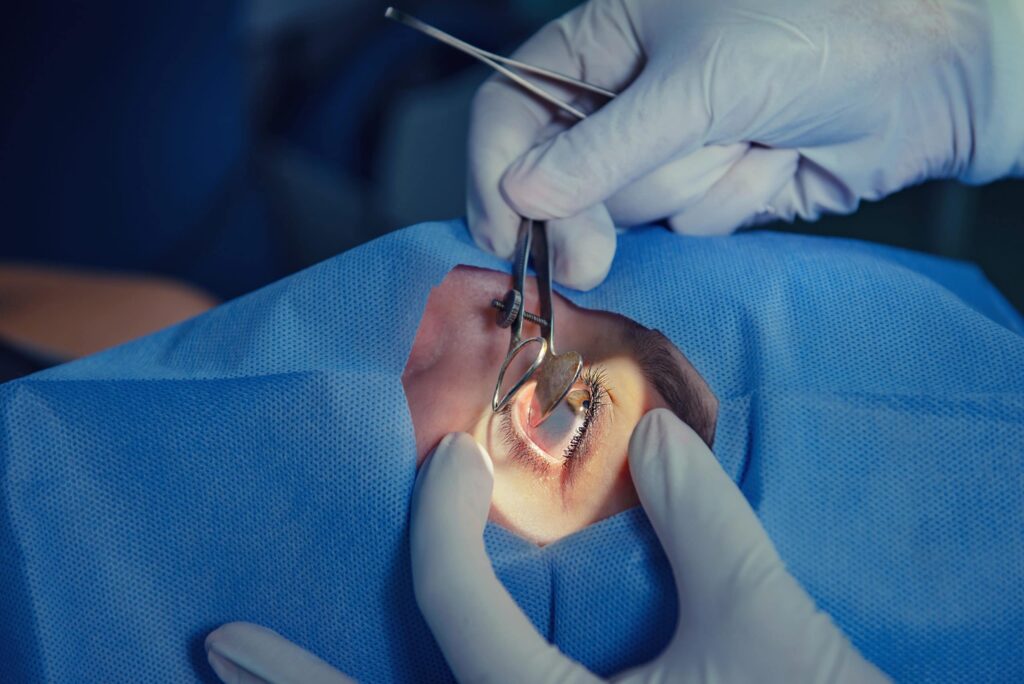
Causes and Symptoms of Cataracts
The development of cataracts may result from a variety of factors including aging, prolonged exposure to UV light, excessive alcohol consumption, smoking, and certain medical conditions such as diabetes. Additionally, some individuals may inherit a predisposition to cataracts. Research has shown that oxidative stress and inflammation in the eye can also contribute to the formation of cataracts, highlighting the importance of a healthy lifestyle in potentially delaying their onset.
Symptoms of cataracts can vary, but common experiences include:
Blurry or double vision
Increased sensitivity to glare
Difficulty seeing at night
Faded colors
Frequent changes in glasses or contact prescription
As cataracts progress, individuals may notice that bright lights appear to have halos around them, making nighttime driving particularly challenging. This phenomenon can be frustrating and even dangerous, prompting many to seek medical advice. Moreover, the emotional impact of declining vision should not be underestimated; feelings of frustration, isolation, and anxiety can accompany the visual changes, significantly affecting one’s quality of life. Early detection and intervention are crucial, as they can help manage symptoms and maintain independence for as long as possible. Read more about the symptoms of cataracts at https://www.urmc.rochester.edu/encyclopedia/content.aspx?ContentTypeID=85&ContentID=P00494
The Evolution of Cataract Surgery
Traditional Cataract Surgery Techniques
Historically, cataract surgery involved a more invasive process known as extracapsular cataract extraction, which required a larger incision to remove the cloudy lens. This traditional method often led to longer recovery times and increased risks of complications.
During the surgery, the cloudy lens was removed, and a thick eyeglass prescription or contact lens was often necessary afterward for vision correction. Patients would have to spend several days or even weeks recovering, often without the ability to use their eyes fully during this time. The fear of complications such as infection or retinal detachment loomed large, making the decision to undergo surgery a daunting prospect for many. Furthermore, the lack of advanced imaging technology meant that surgeons had limited ability to assess the condition of the eye prior to the procedure, which could lead to less than optimal outcomes.
Modern Advances in Cataract Surgery
The landscape of cataract surgery has changed dramatically over the years. With the advent of phacoemulsification, a technique introduced in the late 20th century, surgeons can now use high-frequency ultrasound waves to break up the cloudy lens into tiny fragments, which can then be gently suctioned out through a smaller incision.
This modern technique has drastically reduced recovery times and improved patient outcomes. Additionally, advancements in intraocular lens design have provided patients with better vision correction post-surgery, allowing for a range of options tailored to individual preferences, such as multifocal or toric lenses. These innovations not only enhance visual acuity but also significantly improve the quality of life for patients, enabling them to engage in activities they may have avoided due to poor vision. Moreover, the introduction of laser-assisted cataract surgery has further refined the process, allowing for greater precision in lens fragmentation and capsule creation, ultimately leading to even better surgical results and reduced reliance on corrective eyewear after the procedure.
The Procedure: How Cataract Eye Surgery Works
Pre-Surgery Preparations
Preparation for cataract surgery involves a comprehensive eye examination to assess the severity of the cataract and overall eye health. Surgeons will measure the size and shape of the eye, helping to determine the best type of intraocular lens for the patient. This thorough evaluation may also include tests to check for other eye conditions, such as glaucoma or macular degeneration, which could affect the surgery’s outcome.
Patients may also be advised to stop taking certain medications that could increase surgical risk, and they should arrange for a friend or family member to drive them home after the procedure, as they will be unable to see clearly for a short time following surgery. Additionally, patients are often given specific instructions regarding their diet and any necessary adjustments to their daily routines in the days leading up to the surgery to ensure optimal conditions for the procedure.
Step-by-Step Guide to the Surgery
The actual surgery usually lasts between 15 to 30 minutes and is performed under local anesthesia. Patients typically remain awake but relaxed throughout the procedure. The surgeon begins by making a small incision in the eye. Through this incision, a probe is inserted to begin the phacoemulsification process. This technique utilizes ultrasound waves to break up the cloudy lens into tiny fragments, which are then gently suctioned out of the eye.
Once the cloudy lens is broken up and removed, the surgeon then inserts the new intraocular lens in place of the natural lens. These lenses come in various types, including monofocal, multifocal, and toric lenses, each designed to address specific vision needs. Finally, the incision is closed, often requiring no stitches as it is self-sealing. The precision of modern surgical techniques and technology has significantly improved the safety and effectiveness of cataract surgery, making it one of the most commonly performed procedures worldwide.
Post-Surgery Care and Recovery
After surgery, patients are generally moved to a recovery area, where they are monitored for any immediate complications. Most patients experience improvements in vision within a few days; however, full recovery may take several weeks. During this time, patients will be given eye drops to prevent infection and inflammation. These drops are crucial, as they help to reduce the risk of complications and promote healing in the delicate tissues of the eye.
It is essential for patients to attend follow-up appointments to monitor their recovery and to report any unusual symptoms, such as prolonged pain or changes in vision. Wearing sunglasses outdoors and avoiding strenuous activities can also help facilitate a smooth recovery. Additionally, patients are encouraged to maintain a healthy diet rich in vitamins and antioxidants, as this can support eye health and potentially enhance the healing process. Engaging in light activities, such as gentle walks, can also aid in recovery while ensuring that patients do not strain their eyes during this critical healing period. To learn more about post surgery care click here.
The Impact of Cataract Eye Surgery
Immediate and Long-Term Benefits
The benefits of cataract surgery are both immediate and long-lasting. Most patients notice a significant improvement in their vision shortly after the procedure, often experiencing clearer vision and greater ease in performing daily tasks. Patients typically report better quality of life, being able to read, drive, and engage in leisure activities without the hindrance of clouded vision. This newfound clarity often rekindles interests that may have been sidelined due to deteriorating eyesight, such as painting, gardening, or even participating in community events.
Long-term benefits include the potential for ongoing improvements in vision, with many patients experiencing stable vision for years to come. This procedure dramatically reduces the risk of visual impairment associated with untreated cataracts, enabling individuals to maintain greater independence and improve overall well-being. Additionally, studies have shown that patients who undergo cataract surgery may experience enhanced cognitive function, as improved vision can lead to increased social interaction and mental stimulation, further contributing to a healthier lifestyle.
Risks and Complications: What to Be Aware Of
While cataract surgery is generally safe, it is essential to be aware of potential risks and complications. These may include:
Infection
Bleeding
Inflammation
Retinal detachment
Vision disturbances
Understanding these risks allows patients to make informed decisions about their treatment options. It is crucial to discuss any concerns with a qualified ophthalmologist who can provide guidance tailored to individual health needs. Moreover, pre-operative assessments and post-operative care play a vital role in minimizing these risks. Patients are encouraged to follow their surgeon’s instructions closely, including attending follow-up appointments, to ensure the best possible outcomes and to address any complications promptly should they arise.
In addition to these risks, it is also important to consider the emotional aspect of undergoing surgery. Many patients may experience anxiety leading up to the procedure, fearing the unknown or worrying about potential outcomes. Support from family and friends, as well as counseling from healthcare professionals, can help alleviate these concerns. Understanding the surgical process, the expected recovery timeline, and the potential for life-changing results can empower patients, allowing them to approach their surgery with confidence and optimism.
Why Cataract Eye Surgery is a Game-Changer
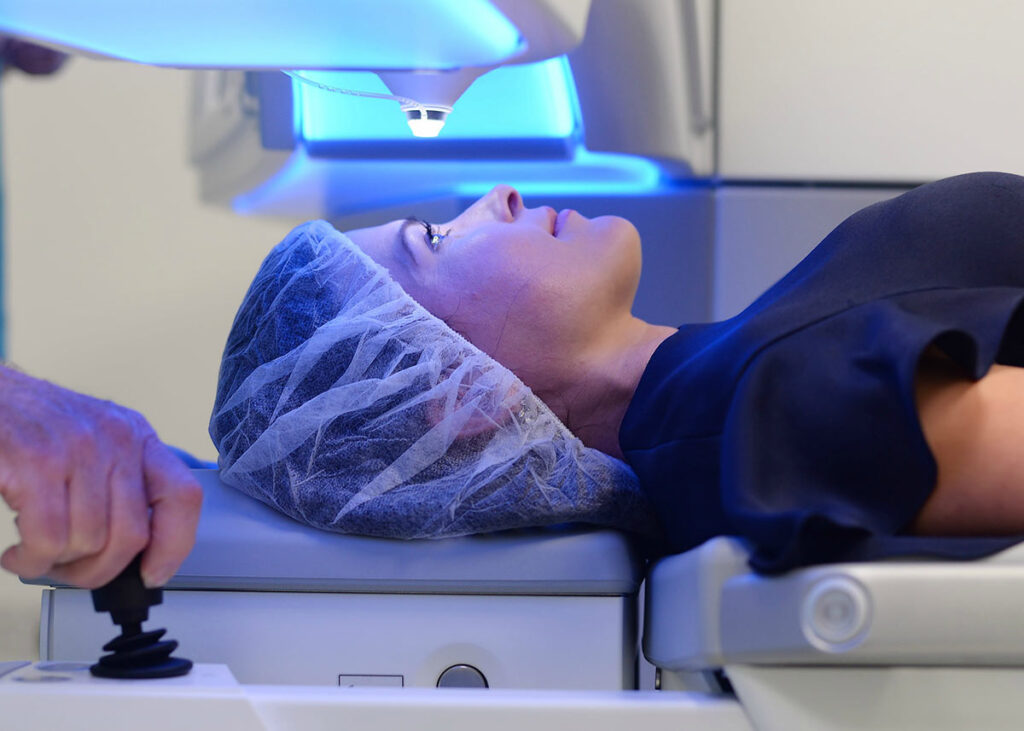
Improving Quality of Life
Cataract eye surgery is a game-changer for many individuals suffering from this common eye condition. By restoring clear vision, the procedure empowers patients to engage in life more fully, enhancing their ability to participate in social activities, work, and hobbies. Studies consistently show that individuals who have undergone cataract surgery report higher satisfaction with their vision and overall quality of life. Patients often describe a renewed sense of independence, as they can perform daily tasks such as reading, driving, and enjoying nature without the hindrance of cloudy vision. This newfound clarity not only improves their practical abilities but also boosts their emotional well-being, allowing them to reconnect with loved ones and pursue interests that may have been sidelined due to vision impairment.
The Future of Eye Health and Vision Care
As technology continues to advance, the future of cataract surgery looks promising, with innovations such as femtosecond laser-assisted cataract surgery emerging. These techniques may further enhance precision and recovery times in the future. The integration of advanced imaging technologies and artificial intelligence is also paving the way for more personalized treatment plans, ensuring that each patient’s unique needs are met with tailored surgical approaches. Additionally, the development of premium intraocular lenses offers patients options that can correct not just cataracts but also other refractive errors, potentially reducing their dependence on glasses after surgery.
Moreover, ongoing research into understanding cataracts can lead to new preventative measures and treatments that could eventually decrease the incidence of cataracts overall. Scientists are exploring various factors that contribute to cataract formation, including genetics, lifestyle choices, and environmental influences. By identifying these risk factors, public health initiatives can promote eye health awareness and encourage proactive measures, such as regular eye exams and healthy lifestyle practices. As awareness grows and technology evolves, cataract eye surgery will remain a pivotal intervention in preserving vision and improving the quality of life for people around the world. The collaboration between researchers, healthcare providers, and patients will be crucial in shaping the future landscape of eye care, ensuring that advancements in treatment reach those who need them most.
Related : Cataract Surgery Sydney: Cutting-Edge Techniques for Crystal Clear Vision

